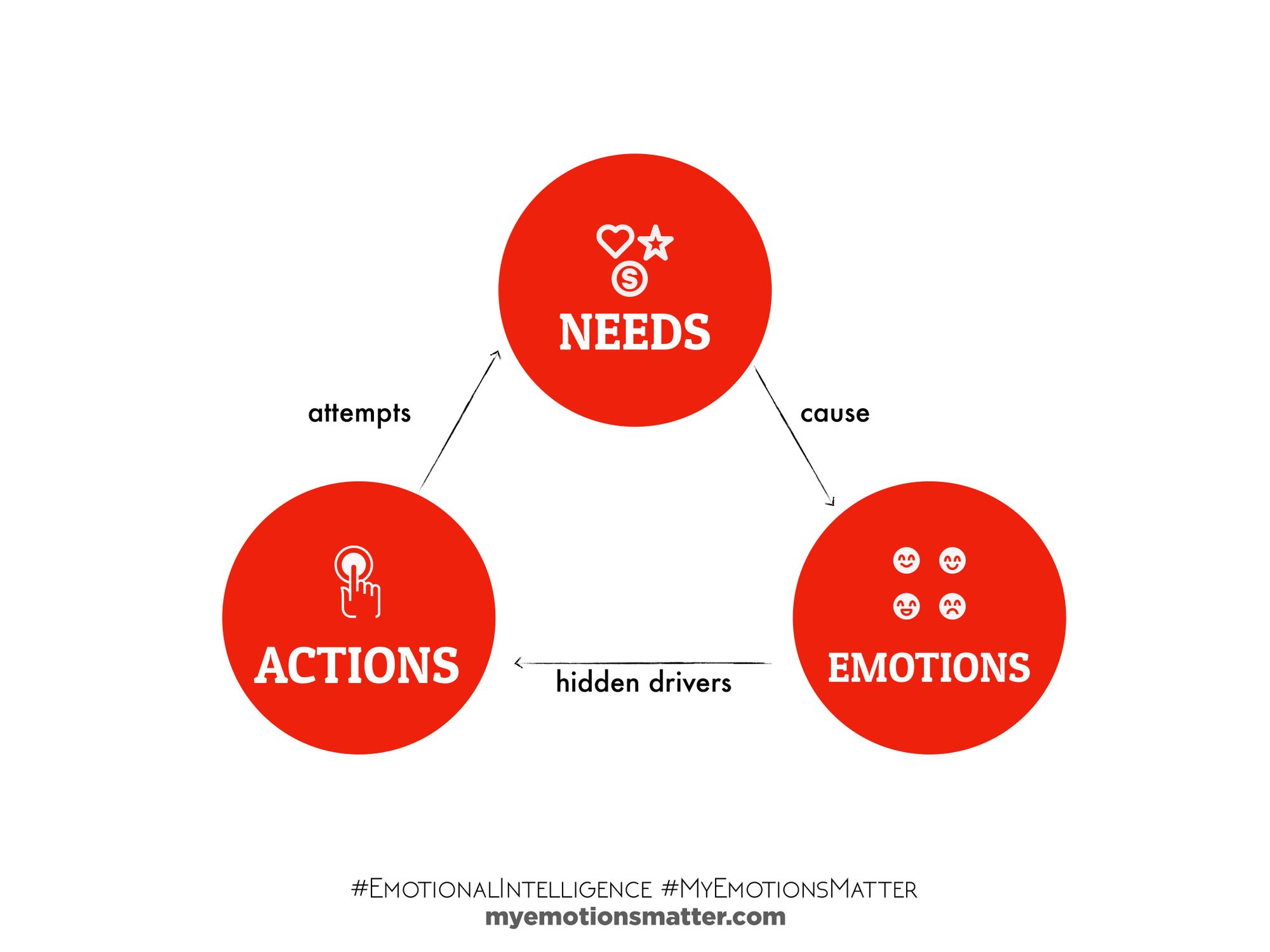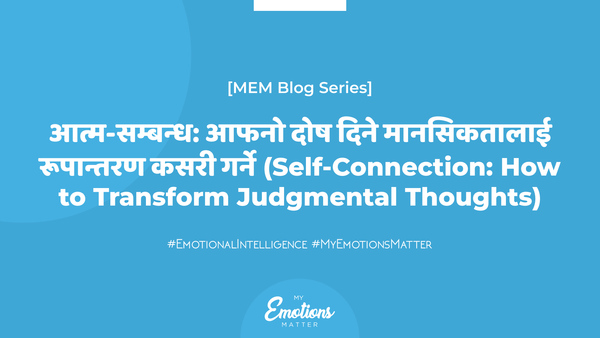Understanding the Relationship Between Needs, Emotions and Actions
As humans, some of the biggest challenges we experience are identifying emotions, understanding emotions, and expressing emotions. To overcome these challenges, Emotional Literacy can help us as it leads to:
- Increased self-awareness (being clear about our needs and directing our behavior accordingly)
- Increased empathy (connecting with other people's feelings and needs to get to know and understand them better)
- Developed empathic communication skills (listening for needs and communicating needs to reduce conflicts, miscommunication, and misunderstand).
How do we get started? Understanding three principles help:
#1. At any moment, we're trying to meet universal, all-inclusive needs (for example, needs like physical safety, emotional support, respect, peace, learning, contribution, etc).
#2. Our emotions are hints about whether those needs are met or unmet (for example, anger, disgust, joy, calmness, frustration, relief, etc).
#3. Everything we do with our actions (our body) is an attempt to meet our underlying needs (for example, talking, remaining silent, eating, running, etc).

Let's take a few examples to understand this better.
- You have needs for communication and closeness with your friends. You call them up but they don’t pick up the call. You feel sad.
- You're struggling with a project at work, so you have needs for support and consideration. You ask a colleague for help. They provide you with guidance and support. You feel thankful.
- You have a need for efficiency and so, you ensure you’re following a routine to submit your assignment on time. Just when you’re about to submit, the internet goes off and now you’re panicking because you might miss the deadline.
- You have a need for physical safety. You feel safe and relieved when others around you also wear a mask.
- You have needs for peace and harmony, so when an elder in the family talks to you in a loud voice, you feel fearful and disgusted.
All these examples point to three things:
- At any given moment, we have needs.
- Our needs cause us to experience certain emotions.
- To fulfill our needs, we either resort to some actions or inactions (using our body).
Do these principles make intuitive sense for you? Think of a recent activity you did. Would you agree that you were trying to meet a certain need of yours through that action? Did you feel pleasant or unpleasant based on whether your actions met your needs or not?
As we can see in the above examples, none of the emotions are good or bad. They signal us about our universal needs, which we try to fulfill through our actions or inactions. Those actions can prove to be either healthy or unhealthy in due course of time, but emotions aren’t good or bad in and of itself.
The more clearly we can navigate the cyclic relationship between needs, emotions, and actions, the more we can connect with ourselves and others.




